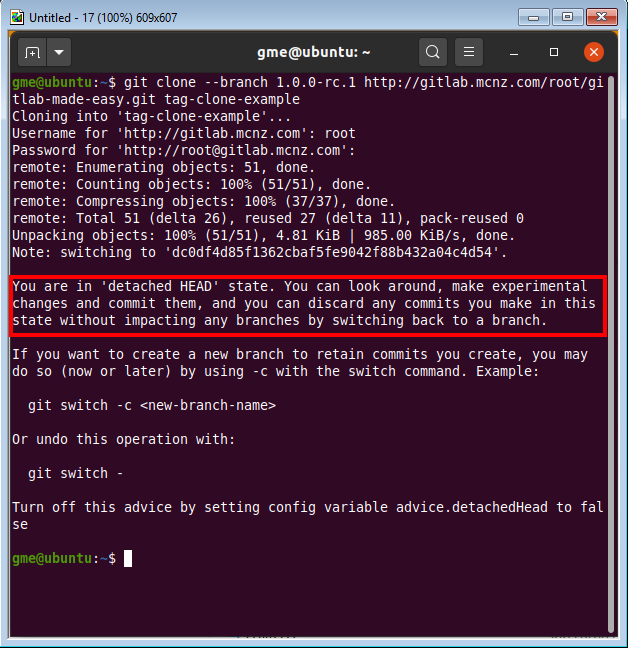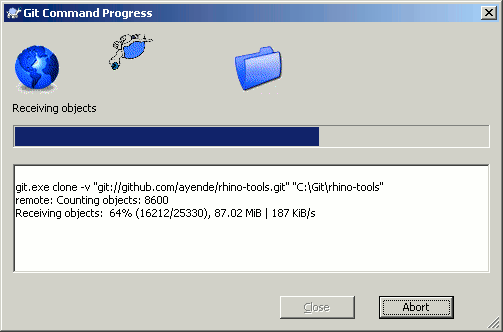
from the remote indicator (the green button in the lower left corner of the status bar). from the Command Palette, F1, or by choosing Open GitHub Repository. You can quickly and easily open a GitHub repository either by searching for GitHub Repositories: Open Repository. GitHub Pull Requests and Issues extension
#GIT CLONE CODE#
Working in Visual Studio Code with a repository uses separate tools. Visual Studio Code tools to work with Git and GitHub Select the ellipsis (.) then select Show Git Output. You can view the Git commands run when you use the Source control extension. Select the ellipsis (.) then select: Push or Push to. Select the Source Control icon from the activity bar. If you have just one remote, you won't be asked to select the remote name. Select the remote name from the pop-up box. On the Visual Studio Code status bar, select the push icon to the right of the branch name.
If you have multiple upstream remotes, select the remote then press Enter.  In the command palette, filter with Git then select Push. Open the command palette with the key combination of Ctrl + Shift + P. If you don't have a GitHub repository yet, but would like to start your project locally, initialize your folder with git. Open an integrated terminal from Terminal -> New Terminal.Ĭlone your repo with the following git command: git clone Ĭhange your terminal into that new subdirectory: cd YOUR-REPO-NAME When you receive the notification asking if you want to open the cloned repository, select Open. It is the most common command which allows users to obtain a development copy of an existing central repository. It is also used to create remote-tracking branches for each branch in the cloned repository. Select (or create) the local directory into which you want to clone the project. The git clone is a git command, which creates a clone/copy of an existing repository into a new directory. If you are asked to sign into GitHub, complete the sign-in process.Įnter azure-samples/js-e2e-express-server in the Repository URL field. When prompted for the Repository URL, select clone from GitHub, then press Enter. To clone all Tizen projects over HTTPS, see Cloning All Projects over HTTPS.Open the command palette with the key combination of Ctrl + Shift + P.Īt the command palette prompt, enter gitcl, select the Git: Clone command, then select Clone from GitHub and press Enter. To clone a specific project over HTTPS, follow the steps below:Ĭlone the required package: $ git clone http s:///cgit/ įor example: $ git clone https:/ //cgit /platform/core /multimedia/avsystem You can clone source files over HTTPS, either for a specific project or for all Tizen projects.
In the command palette, filter with Git then select Push. Open the command palette with the key combination of Ctrl + Shift + P. If you don't have a GitHub repository yet, but would like to start your project locally, initialize your folder with git. Open an integrated terminal from Terminal -> New Terminal.Ĭlone your repo with the following git command: git clone Ĭhange your terminal into that new subdirectory: cd YOUR-REPO-NAME When you receive the notification asking if you want to open the cloned repository, select Open. It is the most common command which allows users to obtain a development copy of an existing central repository. It is also used to create remote-tracking branches for each branch in the cloned repository. Select (or create) the local directory into which you want to clone the project. The git clone is a git command, which creates a clone/copy of an existing repository into a new directory. If you are asked to sign into GitHub, complete the sign-in process.Įnter azure-samples/js-e2e-express-server in the Repository URL field. When prompted for the Repository URL, select clone from GitHub, then press Enter. To clone all Tizen projects over HTTPS, see Cloning All Projects over HTTPS.Open the command palette with the key combination of Ctrl + Shift + P.Īt the command palette prompt, enter gitcl, select the Git: Clone command, then select Clone from GitHub and press Enter. To clone a specific project over HTTPS, follow the steps below:Ĭlone the required package: $ git clone http s:///cgit/ įor example: $ git clone https:/ //cgit /platform/core /multimedia/avsystem You can clone source files over HTTPS, either for a specific project or for all Tizen projects. 
NoteĬonfirm the package name by checking it on Tizen Project List or by running the following command: $ ssh review. To clone all Tizen projects over SSH, see Cloning All Projects over SSH.

To clone a specific project over SSH, follow the steps below:Ĭlone the required package: $ git clone ssh:// or g:29418/ įor example: $ git clone ssh: 29418 /platform/core /account/account-common

You can clone source files over SSH, either for a specific project or for all Tizen projects. However, you can only contribute code to Tizen using the SSH protocol.īefore cloning source files, study the following instructions: The procedures to clone Tizen source files over SSH and HTTPS are almost identical, the only difference being the URL in the Git command. You can clone Tizen source files over SSH or HTTPS.








 0 kommentar(er)
0 kommentar(er)
